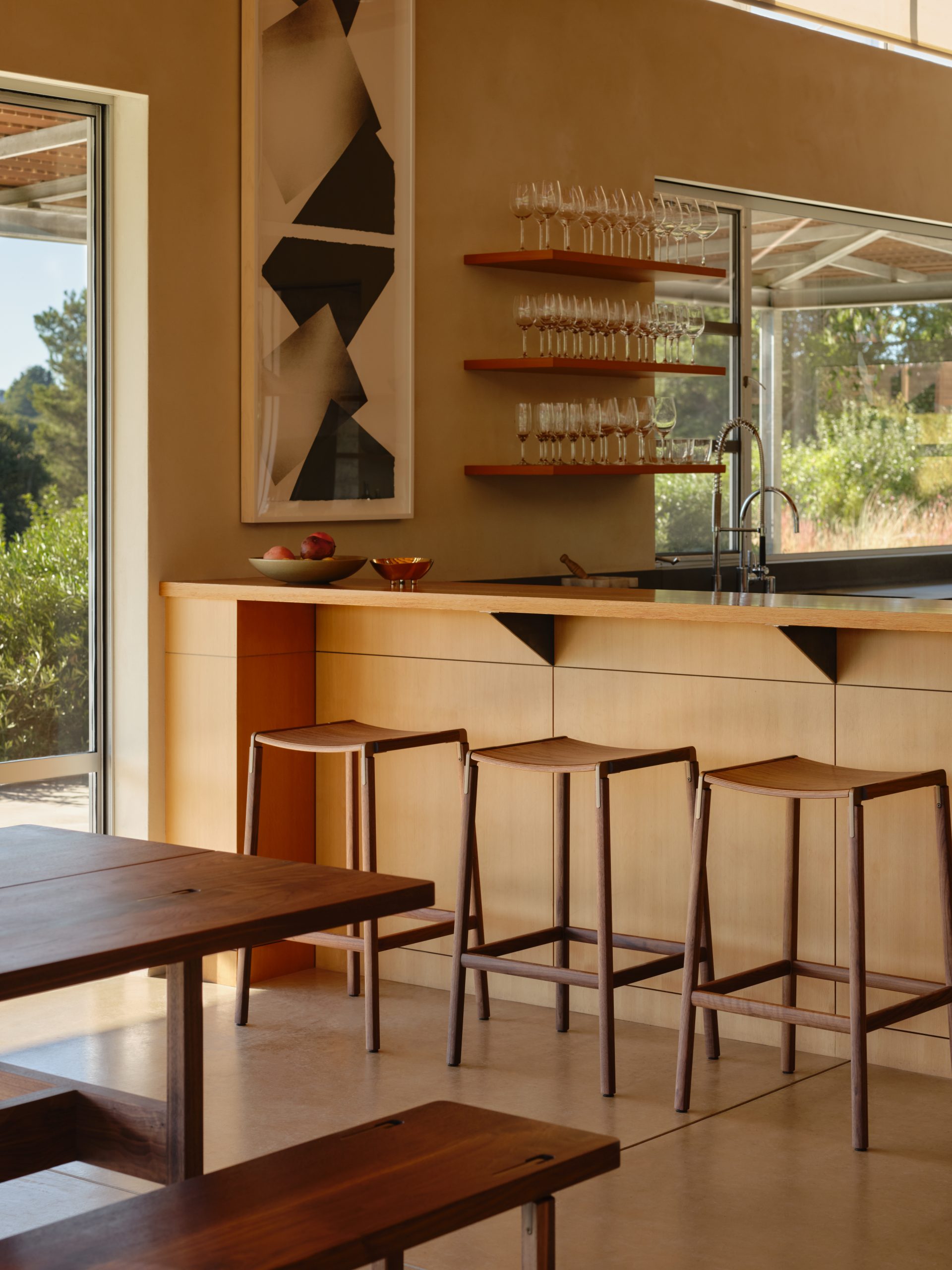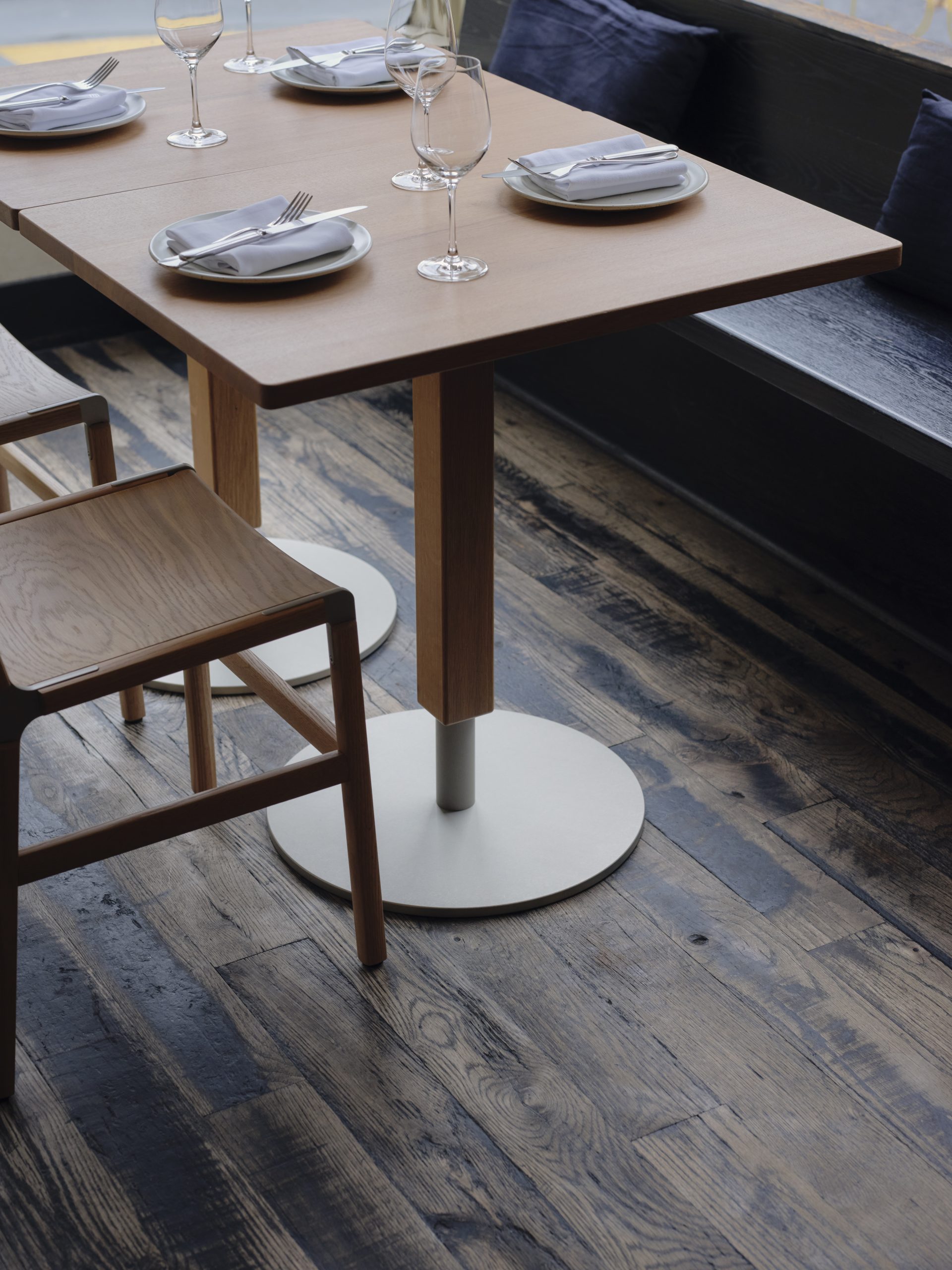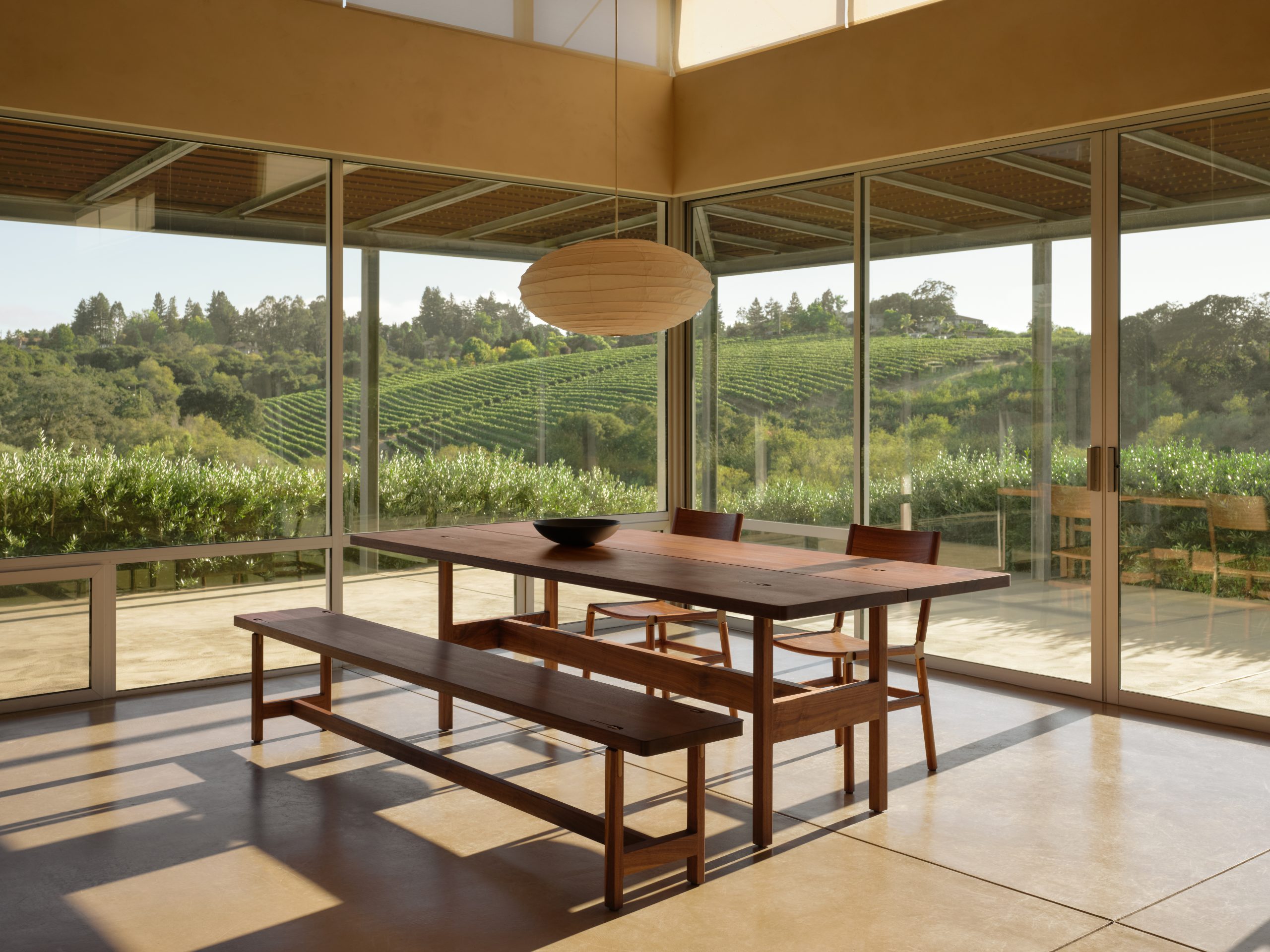April 16, 2024 • Posted by Design Bay Area
Founded in the Mission District of San Francisco, Fyrn is a design and build company that combines classic principles of woodworking with modern manufacturing techniques to create elegant and resilient furniture. Co-founded in 2012 by Ros Broughton – a fourth generation woodworker with ties to the iconic Hitchcock Chair Company – and David Charne, Fyrn believes good design considers future circumstances. With commitment to research & development, Fyrn developed their proprietary design system – Stemn – to create products rooted in craftsmanship and circularity. The system enables Fyrn’s chairs and stools to be built with replaceable legs, joints, and seats to at once customize their products and extend their lifetime. Made in the USA by their own team, Fyrn prioritizes quality across design and manufacturing to produce high-quality craftsmanship at scale.

Q: Fyrn has really become an icon of Bay Area design — the bracket is all over the city in the best establishments, offices and private homes! And until this past year you’d spent a decade producing just one core product — Can you tell us about that singular focus, and why this past year was a catalyst for expansion?
It’s important to first maybe set a little context for Fyrn — This has really been a labor of love over the last 10 years that started with what I’ll call a passion project for my partner Ros Broughton. Ros is a 4th generation craftsman, with a legacy that traces back to the Hitchcock Chair Company, the oldest production chair company in the US, founded in 1818. His grandfather was the Head of Production from the 30’s through the boom of the 50’s.
After 20 years spent building ultra-high end custom cabinetry in the Bay, Ros had a desire to carry forward his grandfather’s legacy, and build a scalable system of furniture that had the same craft + quality as a custom piece, but could be accessible to a larger audience. He felt there had been such a move toward engineering the quality out of products, and wanted to bring it back.
What he thought would be a 6 month process, turned into a multi year R+D project in a small shop in the Mission District. The final prototype design that came from that process back in 2014 is essentially the chair + line of seating we’re still producing today, enabled by Ros’s patented hardware design that is still at the very heart of what we do.
As for the commitment and focus to that line of seating for the last 10 years, part of it was really driven by a desire to do what we do very well, continually improving on our process, but also the very real space constraints in SF. Two years ago, we moved our production from 5,000 square feet to 40,000 square feet in Sparks, Nevada, which opened the opportunity to think about new products. Ros never set out to just build a chair company; he began with the engineering of the chair because it is so hard, and if we could do that well, it would seamlessly translate into all kinds of other pieces.
Last year, we launched tables as they were such a natural fit with our chairs. One collection was more of a function of the success we’ve found in hospitality; our clients were constantly asking for Cafe Tables. The other, I’d call a more intentional launch to leverage our core hardware in a new way – an evolution of the same recognizable, exposed Fyrn bracket but with a new view that is a fresh look for Fyrn.
We’re just getting started in expanding our system to new use cases, it’s exciting!

Q: It’s amazing that your foundational system of hardware is what is helping enable new product design. Can you unpack a little more about your system’s driven approach to design?
On the whole, a lot of furniture, despite being from different brands or designers, is produced in the same facilities — there are only so many places that contract manufacture furniture, and today most of them are overseas.
Pieces are either designed with the capabilities of those large facilities in mind, or a piece with a distinct POV might get watered down or modified in order to produce at scale, which is why commoditized furniture pieces tend to all look the same…or for that matter why custom has become so expensive.
Going back to Fyrn, Ros really set out to scale craft quality – which is something he wasn’t going to be able to get from contract manufacturing — so he had to think about the production as a part of the design process. Fyrn started from a complete white space, allowing us to think about the full life cycle of the product.
We’re utilizing a set of similar materials and components throughout the entire production of the furniture, and across many different products. This means we’re able to think holistically about how we get those materials, how few of them we have to have on site to produce the furniture, and how we maintain and service them when out in the world. With that consistency, we’re able to do things like:
- Be really nimble in not committing raw materials to specific finishes until we have an order avoiding unnecessary waste;
- Shorter lead times, since components can be produced, but not assembled, eliminating the need to warehouse, and enabling us to ship pieces knocked down, saving space + shipping waste;
- A program where we’ll buy-back furniture, refurbish it and sell it on The Annex, our site for seconds + vintage items.
Ultimately, a system’s approach means we’re designing the process, and not just the product itself, which gives us a better, higher-quality product with all these things, including a longer lifespan, engineered in from the start.

Q: How does this idea of systems design of production + process connect with craftsmanship?
After we had our first handbuilt prototypes, it became clear that if we were going to scale this, we would have to figure out how to produce them in mass.
This became an exercise in engineering for Ros + his design partner, Derek. Their focus shifted from designing a chair that fit all their criteria, to designing and producing machinery that would allow someone who wasn’t a craftsperson (like themselves) to step in and produce a uniquely Fyrn component in the same way they would have.
This meant machine design — modifying off the shelf production equipment and building their own machines from the ground up. We now have over 30 of those Fyrn-specific machines — we call them “green machines.” They are at the heart of our proprietary production process, enabling us to truly have craftsmanship at scale.

Q: Amazing, and it certainly feels like there is a resurgence of craft + artisanship, why do you think that is?
I think it’s an interesting question. There is this funny feeling we all probably have as mass production has taken over our lives, and we’ve seen materials transition from glass to plastics, woods to particle board — shifts that are the result of cheap manufacturing and pricing choices on behalf of companies. I imagine we’ve all, at some point, experienced disappointment, when we touch something we bought that doesn’t live up to the hope of its quality… Great design, or something of quality, has this magical essence that you can’t describe, and I think a lot of people are missing that feeling.
Craft + craftsmanship is bringing to life that feeling for folks. I think pandemic pushed people reconsider the objects they are living with on a day to day basis; there was a built up exhaustion toward all the crap that doesn’t actually make people feel good, creating a drive toward fewer, more thoughtfully considered things, with story.
The responses to that quest feel especially rich on the West Coast of late — there are so many talented people and collectives here that are celebrating a craft heritage, integrating natural materials into their work + art. I think Fyrn sits at a really interesting intersection of these values, while also being able to serve a larger audience at scale in a way that is reminiscent of past chapters where great design was able to democratize the ability to own better products.
Q: Anything else you want folks to know about Fyrn?
We love getting to meet folks who are interested in what we are doing. Come by and see us — you can schedule a time to come see pieces in person or tour our original production facility.
Or get out and sit in chairs around town at one of the great restaurants we have as clients: Flour+Water, Slanted Door, or Foreign Cinema.
Contact Fyrn
Get in touch with Fyrn by visiting their website, shop furniture or join their trade program.


